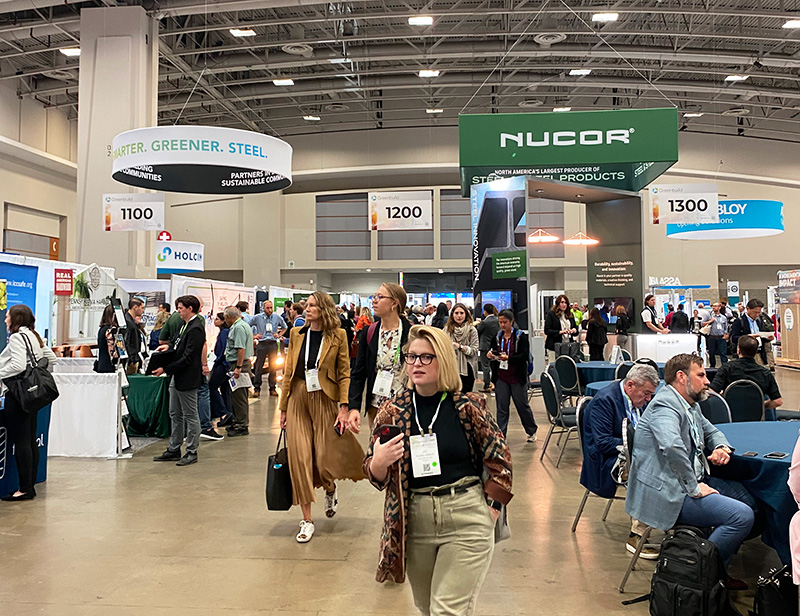Greenbuild exhibitors zoom in on carbon and material transparency

Last week, the 2023 edition of the Greenbuild International Conference and Expo was held in Washington, D.C., at the Walter E. Washington Convention Center. Speaking with a range of glass industry exhibitors, company reps said traffic was fairly good for the show. “We’ve been here since the start,” said Kingspan Light + Air’s Neall Digert, noting that COVID had an impact on attendance, like most trade shows. “It’s not the size it was in 2018, but it’s still a great venue,” he said.
EPDs offer an opportunity for transparency, competitiveness.
Patrick Chopson, chief product officer and co-founder of cove.tool, a construction software company, said that this year, he felt that exhibitors at the show all had messaging around carbon. YKK AP partnered with cove.tool this year to integrate the manufacturer’s products into revgen.tool, which is now available on YKK AP’s own site, and allows architects to model how the company’s products will perform in terms of embodied and operational carbon, as well as other performance factors.
Chopson said that the recent code changes in California, which require the use of environmental product declarations, are likely a sign of things to come, as the state tends to set precedent. EPDs offer data about a product’s embodied carbon and life-cycle impact. Given that embodied carbon measurements are impacted by carbon emissions of the power grid where the company manufactures, Chopson urged companies who work on a greener power grids to create EPDs for their products, as their embodied carbon is likely to be lower. “They might not know it, but they have a massive marketing advantage,” he said.
“EPDs are the mandated norm,” says Kingspan Light + Air's Digert. He says the new set of PCRs, or product category rules, for EPDs have been improved to offer more consistent comparison between products of the same type.
New as an exhibitor at the show, dormakaba also focused on material transparency with its Door Energy Calculator, a digital tool which is in beta. It also allows users to calculate energy usage and costs for different products, for different metro areas. “For architects and building owners, they want to save money over the life of the building,” said Nicole Bird, product marketing manager, dormakaba.
Reps at Assa Abloy said EPDs have been helpful not only for material transparency, but to help them review their own processes and enhance their products. “We created our first EPD in 2008. Initially we had it for compliance,” says Amy Musanti, director, sustainable building solutions. “Now we can use the data we get from the EPD to optimize our products.”
Sustainability resources
- The Inflation Reduction Act includes $250 million appropriated to the Environmental Protection Agency to develop a program for Environmental Product Declaration assistance. Money for grants is available through 2031. Learn more about financial opportunities from the IRA.
- See glass PCRs and EPD from the National Glass Association.
- Learn about the functionality of the Embodied Carbon in Construction calculator.

